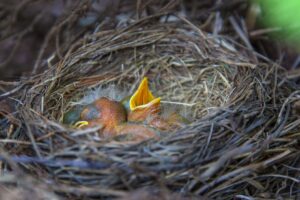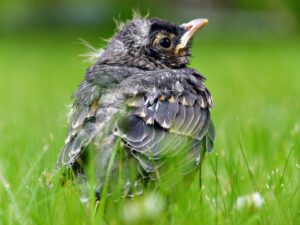Author Archive: hallswood
Wild about Fridays 4/12/20

It snowed today! Did you see it? Quite cheerfully it timed its arrival to the backdrop of Shakin’ Stevens singing “snow is falling, all-around” on my car radio which rather added to the ambience!
Gina Rudling
coming soon
Happy ending for Bear
Bear lived unhappily in a multi cat household and spent a lot of her time at UEA. One morning in late June she was clipped by a car . A lovely lady took her to Eaton Vets where it was discovered she had smashed her top and bottom jaw and broken a few teeth.
Unfortunately the previous owner was unable to pay for her care and we stepped in. She had surgery to repair her injuries and stayed at the vets to recover. Bear was then moved to one of our fosterers and stayed there to recuperate. She was well enough to be adopted in early August.
She now lives as an only cat in the countryside far away from busy roads. She is an absolute love bug and makes her new owner laugh every day. She’s brightened up their lives. She loves sitting on the side of the bath waiting for her owner to finish. Recently she’s taken to stealing all the candles in the house together with earrings!
I just love writing these happy stories Bear is one lucky kitty xx
Teresa Aves
How long have you worked with Hallswood?
-I have worked as shop manager since August 2020, but volunteered for 6 years before that.
Could you tell us more of what you work with?
-I manage our shop on 177 Drayton road in Mile Cross.
What is your favourite part of working for Hallswood?
-Being part of a brilliant community with loads of brilliant dedicated people.
And dare I ask what the worst part is?
-The worst part is dealing with some of the horrible donations that we get. Most are amazing but sometimes people seem to think we are a rubbish tip! Broken items, wet clothing, out of date chocolates.....
What would you say to encourage someone to help us by joining our crazy family of volunteers?
-I would say it's a great opportunity to make friends: do something good and Have a great laugh with lovely people.
What is your favourite British wildlife?
-Favourite wildlife are magpies, crows and jackdaws!
Famous last words: what is your favourite saying?
-Favourite saying is probably not ok for publishing.....
Make an autumn hedgehog!
Things to gather together:-
Some cardboard (old cereal box)
PVA glue
Some leaves from the park or garden
(If you can’t get out to collect them, cut out leaf shapes from brown paper envelopes)
- Go into the garden, to the park, or anywhere that you can see some trees. Gather up some handfuls of leaves, trying to pick out the ones that are whole and not damaged. Look under different trees and see if you can find different shapes and colours. Take them home and spread them out on an old cloth to dry out in the sun.
- Draw a hedgehog shape on the cardboard, the nose is a triangle and the body a big oval. Add some legs!
- Cut around your drawing so you have the shape of a hedgehog. If you wanted to you could paint or colour his face and feet brown. I didn’t because I liked the brown of the cardboard I used.
- When your leaves are dry, glue them one by one and cover your hedgehog with them. If you start at his bottom and work towards his head the leaves lay over each other like spikey spines! When you are happy with it, put a weight on it to stop the leaves curling up as they dry. I used a box with some tins in it.
- Leave it to dry (takes HOURS) but you do need to wait. Then you can give your hedgehog a nose and an eye! I’ve used small black buttons, you could colour them or use a bit of black felt. Then paint glue really carefully all over the leaves, I was a bit worried here as they went all white, but when the glue dries it makes the leaves super shiny and less breakable.
There are lots of things you can do with your hedgehog, stick him on a card to give to someone for their birthday, or send to a grandparent, or stick on your bedroom wall (that’s where mine is going). You could make a whole family of them!
![IMG_3582[3815] Find some lovely leaves. What colour is your favorite?](https://hallswood.co.uk/wp-content/uploads/2020/11/IMG_35823815-rotated.jpg)
![IMG_3584[3817] Draw a hedgehog shape on a piece of cardboard](https://hallswood.co.uk/wp-content/uploads/2020/11/IMG_35843817-rotated.jpg)
![IMG_3585[3819] Cut the shape out but be careful!](https://hallswood.co.uk/wp-content/uploads/2020/11/IMG_35853819-rotated.jpg)
![IMG_3586[3821] Glue the leaves on to your hedgehog but leave the face clear](https://hallswood.co.uk/wp-content/uploads/2020/11/IMG_35863821-rotated.jpg)
![IMG_0495[3823] Draw a face on your hedgehog and he or she is ready for whatever adventure you have planned!](https://hallswood.co.uk/wp-content/uploads/2020/11/IMG_04953823-rotated.jpg)
Baby birds – general
The first thing with any injured or young creature is to access the need: does this animal/bird need to be helped in the first place? If there is an injury or if the animal has been attacked it needs help! A bird that has been attacked by a cat for example might not have visible injuries but it most probably still needs help. All it takes is one scratch or small puncture wound and the infection will most likely kill it.
If the baby bird is sitting out in the open, not moving, not being tended by parents, laying flat or appear lethargic, or if it's being pestered by corvids and/or flies: Secure it and phone a rescue!
Is it fully feathered sitting in a fairly hidden place? If so, leave it and watch from afar.
Do the parents tend to it? If so it is probably ok. It is normal for fledglings to spend some time outside of the nest even though they are not quite ready to do their own thing yet. If you are worried, again, observe from afar!
If it's not feathered or is only partially feathered: Are the eyes still shut? Is it on the ground?
This is not right. Secure the bird and call a rescue.
As a predator, we are the slowest that any animal will meet, so if this creature can not escape our efforts to catch it then how is it going to be able to escape a hungry and fast predators like a fox, dog, or cat?
Does this animal/ bird move like a healthy happy animal or bird, does it look old enough to be out on its own? Does it have a full coat of feather?
Treat it like you wound anything newborn, get in a safe place, place soft and dry bedding in the container.
Pick it up carefully, is it cold to the touch? If it is cold to the touch get it warmed up, give it a hot water bottle, heat mat, or just an empty jam jar with hot water in it. Put the source of heat NEXT to the bird, not under, and give it enough space to move away from it if it gets too hot. Make sure it's not so hot that it will burn the bird.
Bring the creature indoors in a quiet area. If you wouldn’t do it to a newborn human baby, don’t do it to a tiny bird or injured hedgehog! Don't force it to drink water - baby birds get their water through the food it's given.
The only difference between a wild animal baby and a human one is you NEVER cuddle wildlife!
Wild animals stress if you stroke fuss or even talk to them! Keep the handling to an absolute minimum and keep it somewhere quiet and warm till you get it to a rescue.
Last but not least: Leaving it outside to fend for itself or "let nature take its course", well, it wouldn’t cross your mind if it was human so don't do it to them?
Does this creature look injured, are there any open wounds? Yes, it needs help! Flies lay eggs that hatch into maggots, these maggots cause pain and suffering! A fly will lay eggs on any animal/bird which is unwell laying or sitting out in the open! There does not need to be a wound. Being eaten alive by maggots is nothing we believe that any creature deserves; wild or not.


